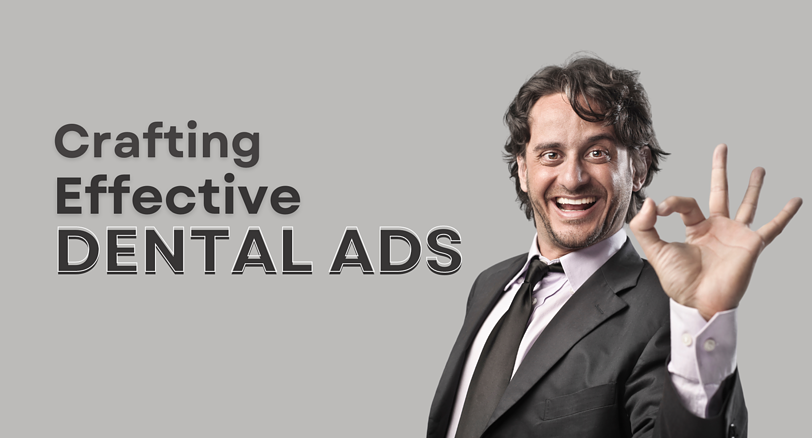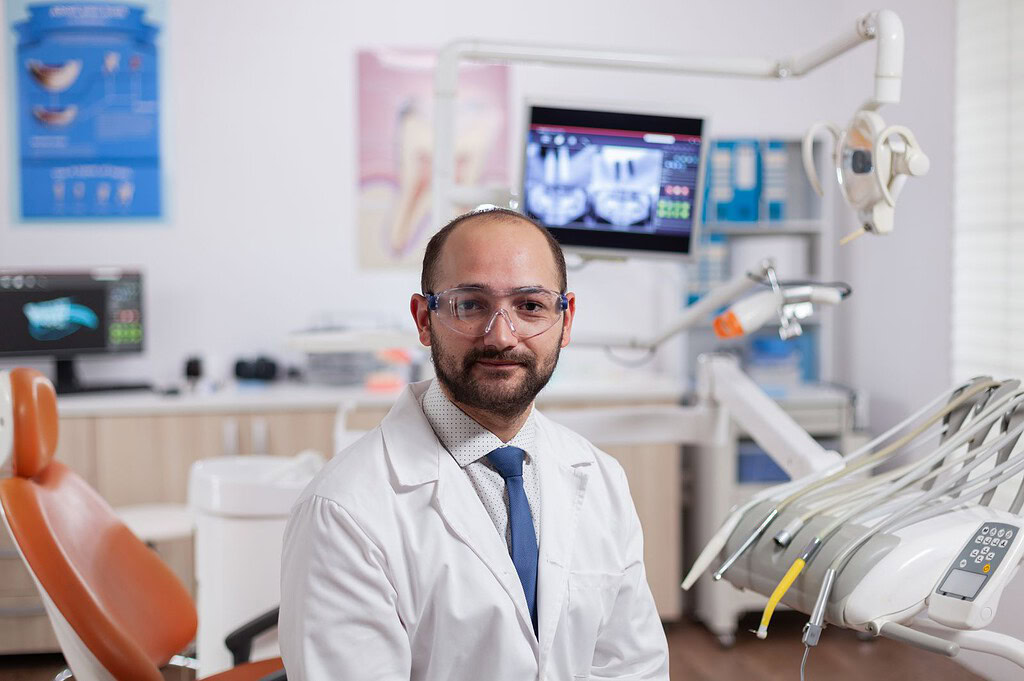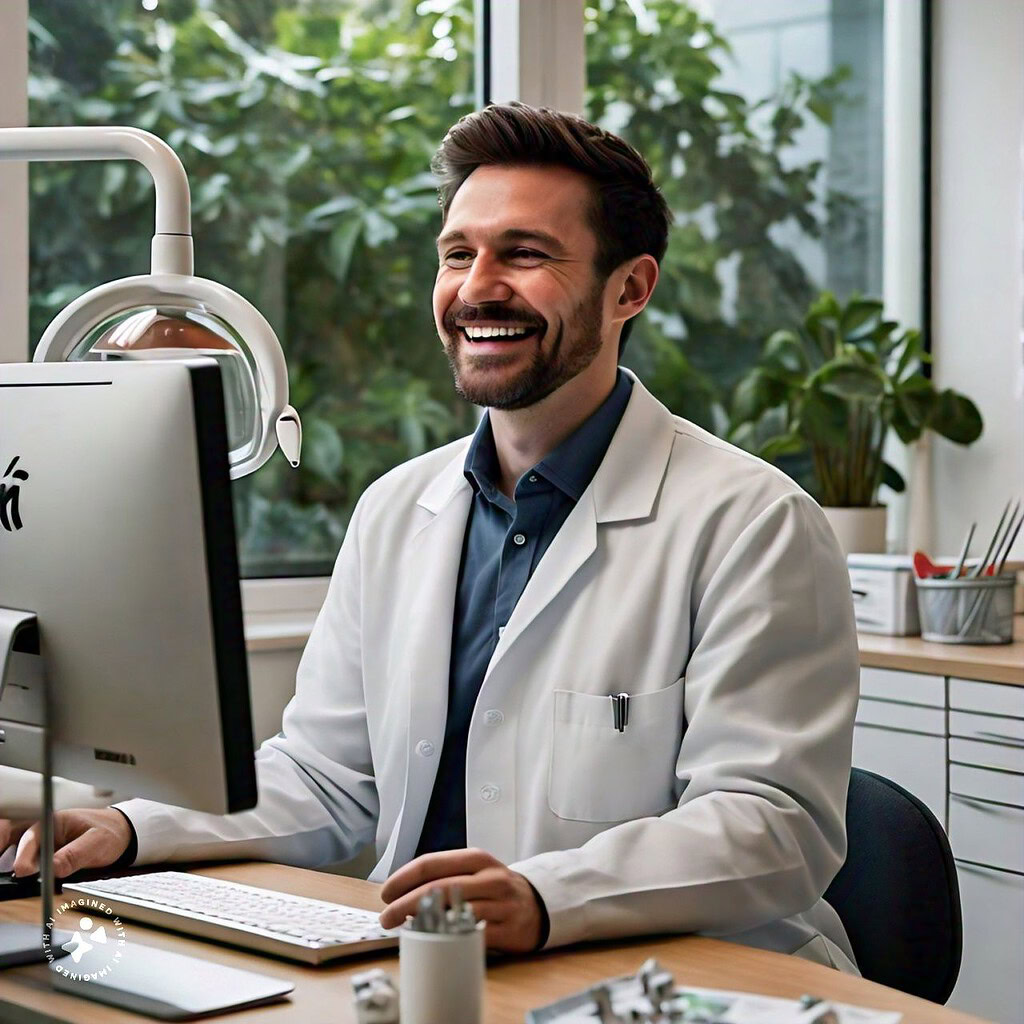Let’s talk about how you can create dental ads that truly convert. When it comes to getting your message out there and increasing your dental practice’s visibility, you cannot play down on advertising.
It is a powerful tool for reaching new patients, promoting your products and services, and building brand awareness.
However, the secret to successful dental ads isn’t just in what you say, but how you say it – they need to be creative, engaging, and memorable.
In this post, we have put together some tricks and tips that can help you craft creative dental ads that deliver results. Just keep reading!
Why Dental Ads for Dentists?
Perhaps you’re wondering, ‘Why do dentists need to run dental advertisements?’ Well, the simple explanation is that dental advertisements offer a direct and impactful way to communicate with potential patients.
In today’s digital age, where the majority of people search online for healthcare providers, a well-placed ad can be the difference between a practice that’s thriving and one that’s just surviving.
But dental ads are not just about attracting new patients; they are instrumental in building brand awareness, differentiating your practice from competitors, and highlighting special services or promotions.
They allow you to control the narrative about your practice, ensuring that your strengths and unique offerings are front and centre.
However, the challenge remains that not every dentist knows how to craft effective ads. Creating advertisements that capture attention, convey the right message, and convert viewers into patients requires a blend of marketing acumen and industry-specific knowledge.
If you can do this yourself, that’s good! But if you can’t, then you can get a reliable dental marketing agency. You can commit the job into their hands while you focus on your clinical roles.
How to Create Effective Dental Ads
#1: Know Your Target Audience
Understanding your target audience is a foundational element of creating effective dental ads. Knowing who your potential patients are helps tailor your messaging to speak directly to their needs, preferences, and behaviours.
This alignment not only increases the relevance of your ads but also enhances their impact, leading to higher engagement and conversion rates. So, let’s quickly consider some strategies that can help you accurately identify your target audience.
-
Demographic Analysis
Gather data on the age, gender, income level, and family status of your local community. For instance, if your practice is near schools, you might focus on families with children.
If you’re in a business district, the focus might be on professionals who might need cosmetic dentistry or regular check-ups.
-
Patient Feedback
Leverage insights from your current patients through surveys or informal conversations. Understanding why they chose your practice over others can give you clues about what appeals to similar prospects.
-
Market Research
Look at the broader trends in dental care in your area. What are the common dental issues? What services are in high demand? This research can help tailor your ads to address the most pressing needs of potential patients.
-
Competitor Analysis
Monitor how other local practices are advertising their services. What seems to be working for them? What gaps are they missing that you could fill?
This not only helps in differentiating your practice but also in identifying underserved needs in your community.
#2: Target Your Keywords and Phrases
The next thing is targeting the right keywords and phrases. This is essential for making your ads visible to the right audience, especially in online campaigns.
These keywords should reflect the terms potential patients are likely to use when searching for dental services online.
For instance, keywords like “emergency dentist in Liverpool,” “teeth whitening services near me,” or “children’s orthodontist” can help attract users looking for specific solutions.
It’s important to include both broad terms that capture general dental services and more specific terms that relate to the unique offerings of your practice.
Tools such as Google Ads Keyword Planner can aid in discovering the most effective keywords based on search volume and competition.
By strategically incorporating these targeted keywords into your ad copy, you enhance the odds of your ads reaching and resonating with prospective patients searching for the exact dental services you provide.
#3: Use PPC Ads to Attract High-Intent Leads
Pay-per-click (PPC) ads are a powerful strategy to attract high-intent leads to your dental practice. They allow you to appear at the top of search engine results when potential patients are actively seeking dental services. They ensure that your practice gets noticed during critical decision-making moments.
By targeting specific keywords related to urgent dental needs – such as “emergency tooth extraction” or “same-day dental crowns” – you can capture the attention of those who are ready to make an appointment.
Moreover, the cost-effectiveness of PPC campaigns is enhanced by their pay-for-performance model, where you only pay when someone clicks on your ads. This makes it a financially viable option for driving targeted, ready-to-act traffic to your website.
#4: Make Sure Your Ads Are Timely and Relevant
Tailor your advertising campaigns to coincide with specific times of the year when people are more likely to seek dental services, such as before school seasons for check-ups or after holidays for cosmetic procedures.
You should also consider keeping your ads updated with the latest offers, advancements in dental care, or changes in your practice.
This approach not only keeps your content fresh but also demonstrates your practice’s commitment to staying current and responsive to patient needs.
#5: Use Optimised Landing Pages
This is essential for converting the traffic from your dental ads into actual appointments. These pages should be specifically designed to match the promises and offers highlighted in your ads, providing a seamless and relevant experience for visitors.
Make sure each landing page has a clear, compelling call-to-action, such as “Book an Appointment” or “Get a Free Consultation.”
Include easy-to-fill forms, pertinent information about the services featured in the ad, and testimonials that reinforce the quality of your practice.
You should also ensure that these landing pages load quickly and are mobile-friendly, as a significant amount of online searches are done via smartphones.
#6: Create Video Ad Campaigns
Video ad campaigns can significantly enhance engagement and recall for your dental practice.
By creating informative and visually appealing videos, you can showcase your facilities, introduce your team, and explain common dental procedures in a way that’s easy to understand.
Videos can be used across various platforms like YouTube, Facebook, and Instagram, reaching a broader audience.
Highlight patient testimonials, before-and-after results, and day-in-the-life glimpses of your practice to make a lasting impression and build trust with prospective patients.
#7: Don’t Neglect Google Maps Ads
Google Maps ads are a strategic tool to increase local visibility for your dental practice. When potential patients search for dental services in your area, your ad can appear directly on Google Maps, complete with directions, reviews, and contact information.
This not only enhances your practice’s local SEO but also directs ready-to-act patients straight to your doorstep. Ensure your Google My Business profile is up-to-date to maximise the effectiveness of these ads.
#8: Leverage Different Remarketing Strategies
Remarketing is a powerful technique to engage individuals who have interacted with your practice but have not yet converted.
By using cookies, you can display targeted ads to these potential patients as they browse other websites, reminding them of your services and encouraging them to revisit your landing page.
Customise your remarketing ads based on the specific services they viewed, and offer incentives like discounted consultations to increase the likelihood of conversion.
#9: Measure Your Ad Success
It’s crucial to track and measure the success of your dental ad campaigns to understand what’s working and what isn’t.
Use analytics tools to monitor key performance indicators such as click-through rates, conversion rates, and cost per acquisition.
Analysing this data allows you to refine your advertising strategies over time, ensuring that you invest in the most effective tactics.
Regularly reviewing your campaign performance helps you optimise your budget and maximise the ROI of your marketing efforts.
Design Your Dental Ads for Maximum Impact
Ready to transform the way potential patients see your dental practice? Crafting compelling and impactful dental advertising is key to standing out in a competitive market.
However, we understand that the intricacies of digital marketing can be daunting. That’s where The Creative Composite comes in.
As a leading dental marketing agency, we specialise in creating custom advertising solutions that resonate with your target audience and deliver measurable results. Our expertise ensures that your ads not only look great but also work hard to bring more patients through your doors.
Don’t let the opportunity to elevate your practice slip through your fingers. Partner with us today, and let us handle everything from ad creation to analytics.
We’re here to help you achieve and exceed your marketing goals with strategies tailored just for you.
Contact us today to see why we’re the best deal around and how we can make your ads shine brighter than ever!
FAQs
How does dental marketing work?
Dental marketing involves a range of strategies designed to attract and retain patients, enhance brand visibility, and promote services.
It typically includes online and offline tactics such as SEO (Search Engine Optimization), PPC (Pay-Per-Click) advertising, content marketing, social media campaigns, and local advertising.
The goal is to create a compelling presence that engages potential patients and convinces them to choose your practice over others.
What social media do dentists use?
These professionals commonly use platforms like Facebook, Instagram, and LinkedIn to reach patients and engage with their community.
Facebook and Instagram are excellent for sharing before-and-after photos, patient testimonials, and promotional offers, while LinkedIn helps connect with other dental professionals and build professional networks.
Are Google ads for dentists?
Yes, Google ads are a popular and effective way for dentists to reach potential patients. These ads can target users based on specific keywords related to dental services, allowing practices to appear at the top of search results when potential patients are looking for dental care.
Google ads can be particularly effective for promoting special offers, emergency services, or specific treatments.
How much do PPC campaigns cost?
The cost of PPC campaigns varies widely depending on several factors, including the competitiveness of the keywords, the geographic location, and the specific goals of the campaign.
Dentists may spend anywhere from a few hundred to several thousand pounds per month on PPC advertising. The key is to focus on high-intent keywords that are likely to convert viewers into patients, optimising the cost-effectiveness of the ads.
What is the difference between PPC and SEO?
PPC and SEO are both digital marketing strategies aimed at increasing visibility and traffic to a website. PPC involves buying advertising space in search engine results, paying a fee each time the ad is clicked.
SEO focuses on improving organic search engine rankings through optimising website content and structure. PPC offers immediate results, while SEO is a longer-term strategy that builds over time.
Where do dental PPC ads appear?
Dental PPC ads typically appear at the top of search engine results pages (SERPs), above the organic listings.
They can also appear on partner websites as part of the Google Display Network, and on social media platforms where ads are shown based on user behaviour and preferences.
These placements ensure high visibility to potential patients actively searching for dental services or related content.




